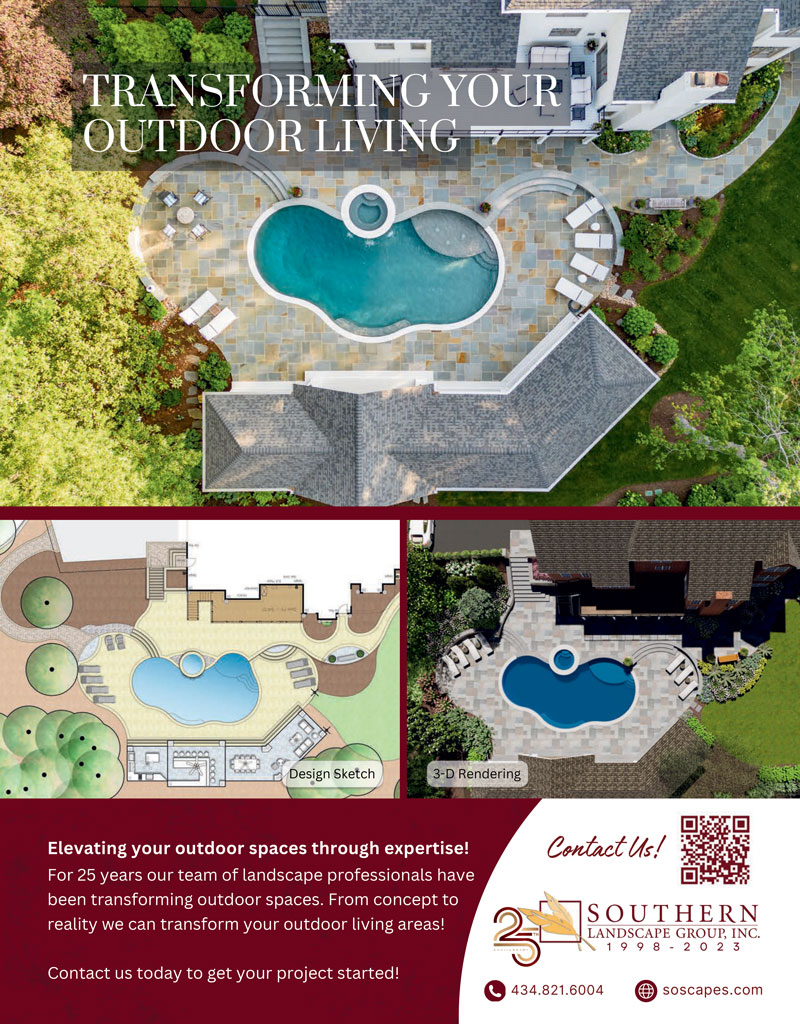Fine Lines: Geometric Patterns Make Bold Splash for Summer
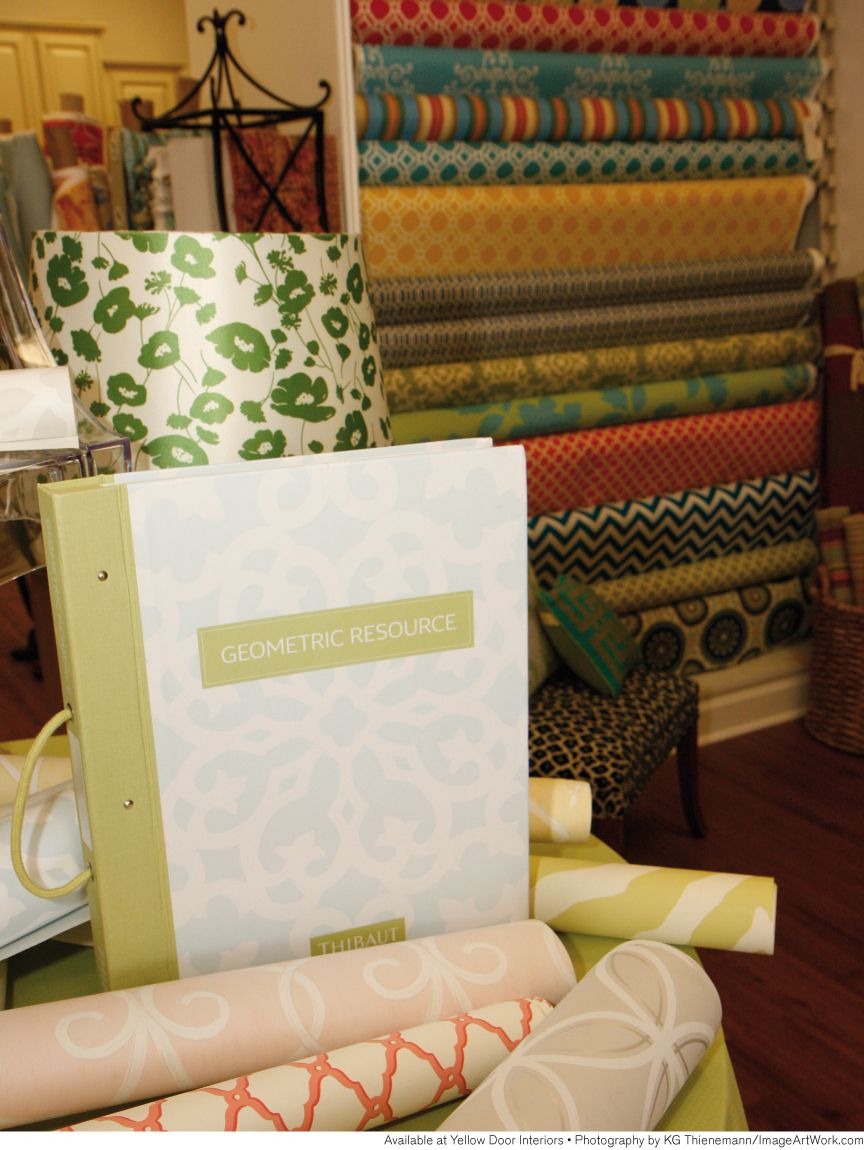
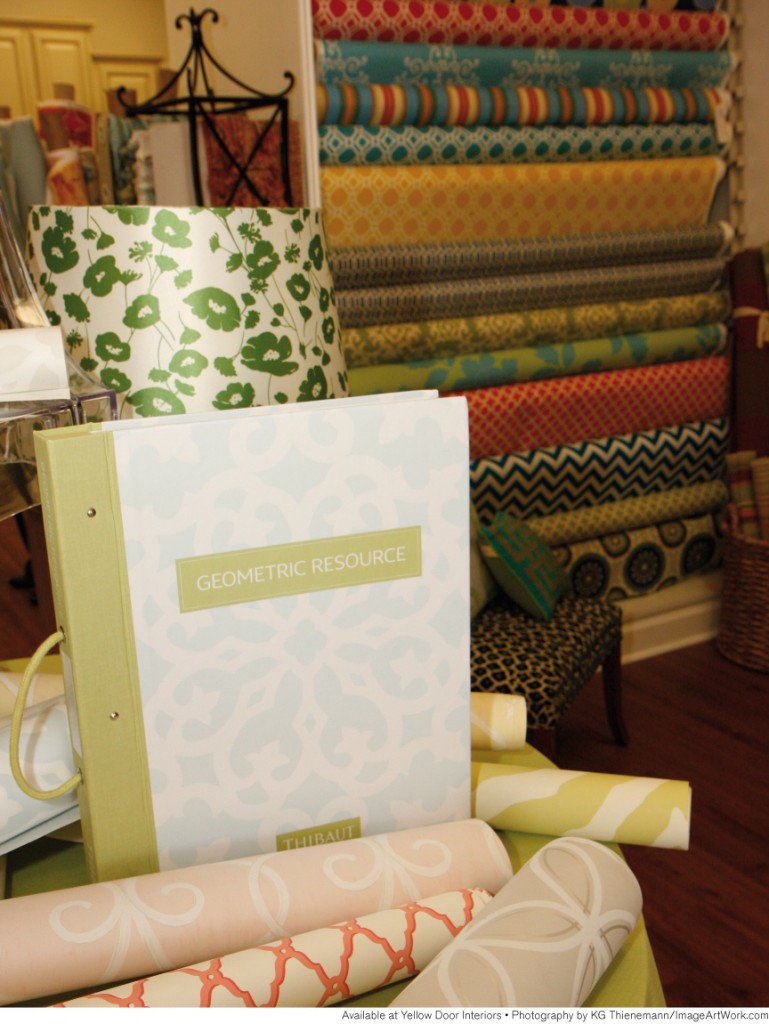 You don’t have to know a rhombus from a rectangle to know that geometric patterns are a hot trend in home design. The proof is everywhere: Talk to any designer, flip through the pages of design magazines and catalogs, or scan the shelves of home décor stores and you’ll see an abundance of geometric patterns in everything from textiles to floor and wall coverings to accessories. Bold or subtle, these patterns can add pop to your existing décor within any budget. Whether installing new draperies, wallpapering your powder room, or shopping for new summer pillows, think inside the geometric box for a fresh, new look.
You don’t have to know a rhombus from a rectangle to know that geometric patterns are a hot trend in home design. The proof is everywhere: Talk to any designer, flip through the pages of design magazines and catalogs, or scan the shelves of home décor stores and you’ll see an abundance of geometric patterns in everything from textiles to floor and wall coverings to accessories. Bold or subtle, these patterns can add pop to your existing décor within any budget. Whether installing new draperies, wallpapering your powder room, or shopping for new summer pillows, think inside the geometric box for a fresh, new look.
Although one of the hottest home trends, geometric patterns have been emerging as a top trend for a few years now—and even so, they hail from a deeper tradition, says Linda Edwards of Interiors by Decorating Den. She explains that home design trends are rooted in fashion trends, citing as an example fashion icon Diane Von Furstenburg and her patterned wrap dresses first made popular in the 1960s and 70s. She also points to interior design legend David Hicks, known for his use of bold, modern patterns mixed with antiques—a tradition carried on today by his daughter, designer India Hicks. “This resurgence goes back to ‘everything old is new again’,” says Edwards.
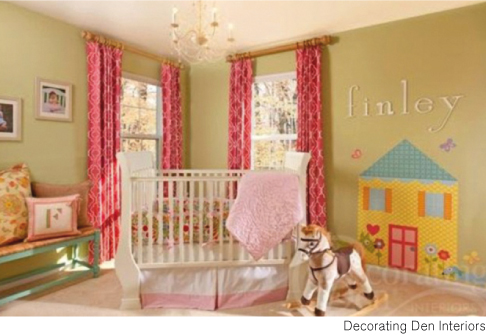 Why now? “After seeing lots of big, bold, excessive florals and ruffles in the 80s and 90s, people now want to go for a more uncomplicated, modern, streamlined look,” says Edwards. Although an obvious of-the-moment look, geometric patterns have a certain timelessness that makes them classic, which suits the Virginia aesthetic well. Heather Kinder, of SPACES by a little french, says that some of these patterns—think white trellis on a green background, or a quatrefoil pattern in pink—evoke a real Virginia-traditional feel. The new geometrics are vibrant and fun, Kinder says, and can complement just about any interior. “People love geometric patterns because they can be bright and colorful and cheerful,” she says.
Why now? “After seeing lots of big, bold, excessive florals and ruffles in the 80s and 90s, people now want to go for a more uncomplicated, modern, streamlined look,” says Edwards. Although an obvious of-the-moment look, geometric patterns have a certain timelessness that makes them classic, which suits the Virginia aesthetic well. Heather Kinder, of SPACES by a little french, says that some of these patterns—think white trellis on a green background, or a quatrefoil pattern in pink—evoke a real Virginia-traditional feel. The new geometrics are vibrant and fun, Kinder says, and can complement just about any interior. “People love geometric patterns because they can be bright and colorful and cheerful,” she says.
Adding to the feel-good vibe of these refreshing patterns is their incredible versatility. “Geometric patterns give you interest without locking you into one particular look,” says Dianne Mowry of Yellow Door Interiors. A self-proclaimed “pattern person,” Mowry says that geometrics work well because while they are interesting and pretty, they don’t have to be too feminine, too modern, or too juvenile. There’s a pattern for every taste and décor; think beyond basic stripes and polka-dots to the look of fretwork, lattice and medallions. Kinder also points out that most geometric patterns’ secondary color is white or off-white, which means that they can blend with just about anything.
 Refresh Your Space with Geometrics
Refresh Your Space with Geometrics
Edwards tells her clients that these patterns often “work better in a pop”—an ottoman, a grouping of pillows, perhaps some drapes. “Geometric patterns work best against an uncluttered, neutral palette—like gray, cream, latte, or even soft blue-green,” she says. Kinder also likes to use geometrics in smaller doses for larger effect. One of her favorite places to use geometric wallcovering, for example, is in the self-contained jewel box of the powder room. Geometrics, used in small but bold ways like this, say, “I know what I like, I know who I am,” says Kinder. Mowry points out that the kitchen, too, is a great place for geometrics—in window treatments, chair cushions, tablecloths and more. “A pattern with curves or circles balances out the linear nature of the kitchen,” she says.
Designers agree that geometric patterned wallpaper can add a great dash of interest to the back of a bookshelf, the interior of a china cabinet, or even one feature wall in a room. Edwards also suggests an idea for the DIY set: create custom wall art by placing geometric-patterned wallpaper on plywood—framed or not—for an instant, inexpensive wow on your walls.
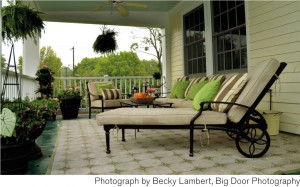 Geometric-patterned rugs are also a great way to add a fresh look to your home. “Rugs are a fabulous way to add style without a huge expense,” says Kinder, explaining how an inexpensive dhurrie rug in a fun color and pattern layers nicely over a neutral rug or wall-to-wall carpet. Even a zebra print evokes a geometric feel, says Mowry. Layering this type of rug “adds a fun and trendy feel, but will keep its longevity. Doing regular bolton rug cleaning will help in keeping your rugs like new to last you years. These types of things never go out of style,” she says. If you have old carpets you can incorporate into your interior design, have them cleaned by a carpet cleaning.
Geometric-patterned rugs are also a great way to add a fresh look to your home. “Rugs are a fabulous way to add style without a huge expense,” says Kinder, explaining how an inexpensive dhurrie rug in a fun color and pattern layers nicely over a neutral rug or wall-to-wall carpet. Even a zebra print evokes a geometric feel, says Mowry. Layering this type of rug “adds a fun and trendy feel, but will keep its longevity. Doing regular bolton rug cleaning will help in keeping your rugs like new to last you years. These types of things never go out of style,” she says. If you have old carpets you can incorporate into your interior design, have them cleaned by a carpet cleaning.
Ikat is another popular look that falls into the trendy geometric category. Linear but soft, this pattern is a look we may have once associated with a global bazaar but now blends with many of our traditional interiors. “Ikat is a really great pattern because you can use it in a traditional home but still have an updated look,” says Kinder. “It doesn’t compete with patterns like florals or oriental rugs because it is so different, and the tones in an ikat flow into each other,” she says.
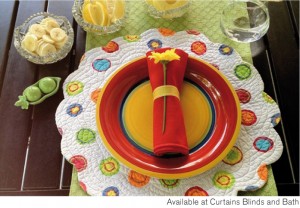 Mowry suggests using geometric patterns in your outdoor spaces. “People are really using their outdoor spaces,” she says, encouraging homeowners to put as much attention into adorning this space as their interiors. Among summer’s bold outdoor colors, bright sun and delicate flowers, geometric patterned-goods like chair cushions, pillows, placemats and more make a pleasing aesthetic statement. She touts the durability of today’s indoor/outdoor fabrics for the special qualities that help them withstand the rigors of outdoor conditions. “Geometrics are fun and easy to mix with existing patterns like florals and paisleys on outdoor cushions,” she says.
Mowry suggests using geometric patterns in your outdoor spaces. “People are really using their outdoor spaces,” she says, encouraging homeowners to put as much attention into adorning this space as their interiors. Among summer’s bold outdoor colors, bright sun and delicate flowers, geometric patterned-goods like chair cushions, pillows, placemats and more make a pleasing aesthetic statement. She touts the durability of today’s indoor/outdoor fabrics for the special qualities that help them withstand the rigors of outdoor conditions. “Geometrics are fun and easy to mix with existing patterns like florals and paisleys on outdoor cushions,” she says.
Scale is a big factor in using geometrics. Mowry warns against using small-scale patterns on large-scale pieces, because the result may be too busy. “The whole point of geometrics is clean simplicity,” she says. Kinder says you also have to vary the scale when combining different patterns in a room. In addition to large and small repeating patterns, she suggests incorporating both “hard geometrics,” like stripes and chevrons, with “soft geometrics,” like trellis and repeating medallions, for a balanced look.
If you thought you were finished with geometry class, think again. This time around, however, you have lots of inspiration and guidance to help you strike a balance in your home using this popular but timeless trend.
QUICK TIPS FOR WORKING WITH GEOMETRICS
DO: Stay consistent with background color. These prints read bright and fresh because most rest against either white or cream. Pick the background that best suits your décor and stick with it for all fabrics in the room.
DO: Choose a color that complements your existing color scheme and run with it. Several different geometric patterns in the same color way will provide plenty of interest; no need to overdo it when using these dramatic patterns.
DON’T: Limit yourself to fabrics; these graphic patterns are popping up in rugs, ceramics, tabletop, wallpaper and artwork.
DON’T: Feel the need to embellish these fabrics with heavy trims and embellishments. A simple contrast band or ribbon is a cleaner, current option.
Source: Heather Kinder, SPACES by a little french
